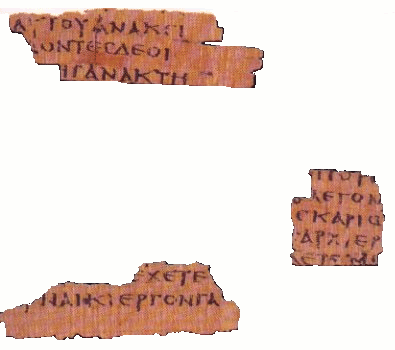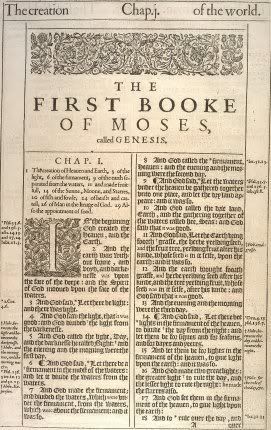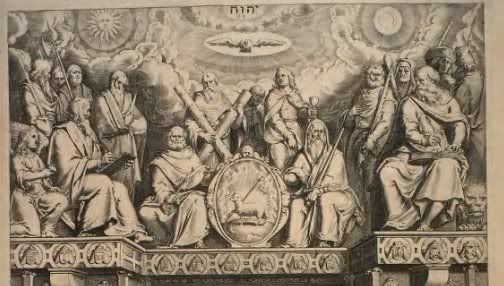Bow To Him All You Gods
Rejoice, O ye nations, with his people: For he will avenge the blood of his servants, And will render vengeance to his adversaries, And will make expiation for his land, for his people.Against the Masoretic Text in most of our bibles, the Dead Sea Scrolls and Septuagint preserve a rendering of Deuteronomy which, interestingly enough, is alluded to in the epistle of Hebrews:
--Deut 32:43, ASV
Be glad, O skies, with him, and let all the sons of God worship him. Be glad, O nations, with his people, and let all the angels of God prevail for him. For he will avenge the blood of his sons, and take revenge, and repay the enemies with a sentence; and he will repay those who hate, and the Lord shall cleanse the land of his people.
--Deut 32:43, New English Translation of the Septuagint
Rejoice, O heavens, together with him; and bow down to him all you gods, for he will avenge the blood of his sons, and will render vengeance to his enemies, and will recompense those who hate him, and will atone for the land of his people.
--Deut 32:43, 4QDeut(q), DSS
And when he again bringeth in the firstborn into the world he saith, And let all the angels of God worship him.The LXX obviously rendered "elohim" from the Hebrew as "angelos" or angels, which may also be what happened with the Vorlage of Hebrews (if we postulate a Semitic autograph).
--Hebrews 1:6, ASV
This incongruity between the ancient witnesses of Deuteronomy in the LXX, DSS, and Hebrews and the Masoretic texts of our Bible suggests to me that the accepted form of Deuteronomy is corrupt and errant. But the more I research, the more I realize that there may have never been a final form--never a Deuteronomy apart from the compositions that were being continually edited and altered in various ways from the beginning until today. It may be that the autograph is only assesable through ingenuity and guesswork. But regardless of the history of textual transmission, this variant is a fascinating one that I would gladly pen back into my bible if the margins were big enough.





